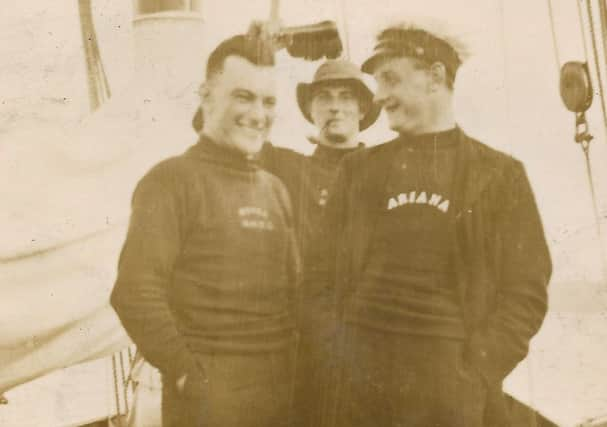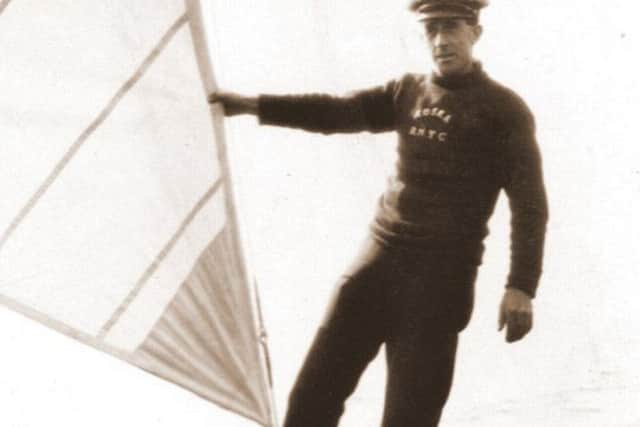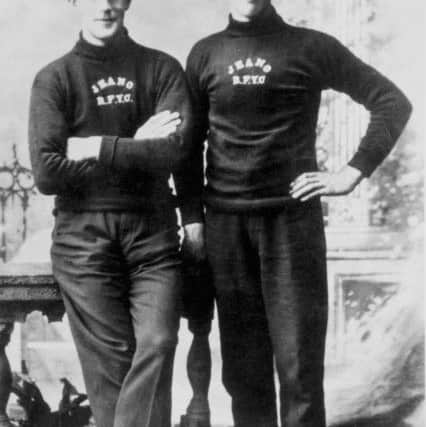The crofters who raced yachts for the Scottish glitterati


Now, a new book aims to celebrate the ordinary men of Loch Broom, who were called upon by the elite to lead their racing yachts up and down the West Coast during the summer as the sun shone on the golden era of the sport.
Those recruiting the Highlanders included the Paisley thread magnates Clark and Coats; the heirs of the Singer sewing machine fortune, the Teacher whisky family and James Templeton and family, the carpet magnates of Glasgow. The Lipton kings of the tea trade also liked to race.


Advertisement
Hide AdAdvertisement
Hide AdInterest in the sport was such that in 1885, despite bad weather, two packed Clyde excursion steamers followed a pair of yachts owned by the Clark and Coats families from Paisley on a 60-mile race around Ailsa Craig.
On the Yachts explores for the first time the stories of the sailors at the helm of these glorious vessels. The book has been written by James MacGregor, who was born and brought up in Ullapool, and Robyn Mackenzie, both who have late family members who worked the yachts.
Mr MacGregor said his father William worked on the yachts in the early 1900s with Paisley threat magnate James Coats Junior, who went on to donate school books to local schoolchildren.


He added: “One of the aims of this book is to try to give the same weight to the names and life stories of the local men, as is given to histories of the famous owners and their boats. Of course, with so many of the crewmen all named MacKenzie, and – even those who were not MacKenzies being cousins or married to MacKenzies – that was no easy task.”
Mrs Mackenzie said her interest in the yachting life of the Lochsiders stemmed from the family of her late husband, Murdo, whose uncle, great uncle and grandfather worked the yachts for many years.
She added that the Loch Broom men were well known for their seamanship skills and became highly sought after as crew, some who worked for 22-week seasons.
At the turn of the last century most fishing vessels were still engine-less, with a ready pool of men for whom harnessing the power of the wind and tides was second nature.
“The seasonal work fitted well into the crofting calendar. The men cut the peats and planted their crops before departing for the yachting season. They returned in the autumn to bring home the peats and take in the harvest,” Mrs Mackenzie she said.
Advertisement
Hide AdAdvertisement
Hide AdLoch Broom men had worked at sea for generations, often as self-employed fishermen in their home waters, or as hired crew on the big East Coast herring luggers.
Like other fishermen, they were well equipped with the skills and physical strength needed to crew the sailing yachts of some of Britain’s wealthiest families.
MacGregor said crewing the yacht gave a welcome income for the seamen of Loch Broom and neighbouring parts of the West Highlands.
He added: “This form of employment offered a guaranteed cash income, in stark contrast to the uncertain returns from fishing and subsistence agriculture. The money earned by these men made an important contribution to the economy of the Ullapool area.
“In addition, the seasonal nature of the work allowed the seamen to earn money without having to emigrate or spend virtually all their time away from home on deep sea merchant vessels. As a result, the descendants of many of the men illustrated in these photographs can still be found in the Ullapool area.”
Copies of the book are available from the Ullapool Museum, Ullapool Bookshop and The Ceilidh Place Bookshop